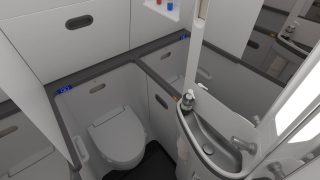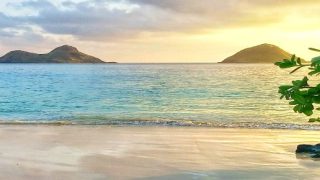Flights to Hawaii are some of the most challenging for anyone with physical issues or for those who require a wheelchair. But things are about to change and the first of these improvements will come soon.
The US DOT will finally require that narrow-body planes be equipped with accessible lavatories for those physically challenged, but that part is complicated and will take time. In the meantime, Hawaii’s visitor statistics and flight duration are such that these lavatory upgrades are severely needed. The average age of a Hawaii visitor is about 45 years while those over 60 make up well over 20%.
Seeking to address one of the most significant challenges faced by passengers with physical disabilities, the US Department of Transportation (DOT) this summer announced a new rule that will require airline lavatories on narrow-body aircraft to be more accessible to wheelchair users. This rule has been very long in coming, and started as a draft seven years ago. While it will still take another decade or more to be fully in effect, it will, in the end, definitely be a big step in the right direction.
Here are lavatory improvements for everyone we can expect in the interim.
Lavatory grab bars, and more accessible faucets and lavatory door locks are about to get implemented, as well as new visual privacy barriers for lavatories on narrow-body planes with at least 125 seats. That is expected to take place in the next 36 months and covers every single-aisle aircraft flying to and from Hawaii.
In the bigger picture, the news isn’t as good. Single aisle aircraft will not need to be equipped with expandable, dual lavatories the way wide-bodies are for another ten years. Then too it will only apply to new aircraft and will not be retrofitted into planes currently in service or those delivered within the next 10 years.
The new rules for narrow-body aircraft with 125+ seats.
This applies only to planes that are ordered by airlines 10 years after the new rule date (or delivered 12 years after that date), then, and only will will airlines be mandated to “” or more seats that are ordered 10 years after the effective date or delivered 12 years after the effective date — or on new type-certificated aircraft designs filed 1 year after the effective date — carriers must “include at least one lavatory of sufficient size.” That means it will provide for an individual and an assistant, up to about 225 lbs in weight, to be able to use the new lavatory in a closed space with the same degree of privacy offered other passengers. The lavatory must also allow for use of the plane’s wheelchair for ingress and regress.
You’ll already find such lavatories on widebody aircraft.
These accessible lavatories are seen widely as they have long been mandatory on widebody planes. However, there has been no such rule associated with narrow-body planes. And of course these single-aisle planes are still relatively new to such long flights as Hawaii. They are, however, becoming the norm on Hawaii flights of seven hours duration soon even more.
Passengers requiring accessible lavatories have faced all forms of humiliating experiences on narrow body planes, if they even choose to fly.
Aircraft lavatory developers are already at work creating possible solutions. This isn’t major science after all. When you are on a wide-body aircraft, you’ll simply note that two lavatories at the rear of the plane will share a connecting door that can be operated by the flight crew to create the double lavatory.
A compounding issue is the fact that there is a shortage of airplane aisle chairs.
The new DOT’s new rule will mandate airlines using a narrow-body fleet accommodating 125+ passengers seats must provide aisle chairs for entry and exit for the aircraft as well as partial entry to the lavatory. Given that the DOT will also require that wheelchairs must maneuver to allow for privacy, airlines will be able to have curtain barrier as an alternative.
Image courtesy of Wheelchair Travel.







On my first flight I could see that I wasn’t going to be able to fit my son and his wheelchair in the airplane restroom. I heard that a seat is being worked on for wheelchair users and their caregivers where they can stay in their wheelchair and roll into the space. Done and done.
Our family is going to Maui in October 2024. When will we be able to buy our flights? We have our accommodations in Keihi booked and deposit is paid. Then we fly to Kauai, will we have limited flights to go there?
Sincerely
Gene G